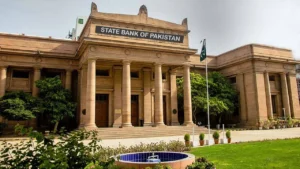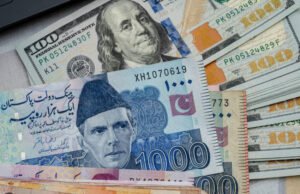In the modern world, where internet speed and connectivity form the backbone of economies, Pakistan’s struggle to keep up with global standards is becoming increasingly evident. While countries like the United States, Europe, and multiple Arab countries have set minimum broadband speeds of 100 Mbps or more, Pakistan’s average broadband speed languishes at around 10-20 Mbps, far below the global average of 78.62 Mbps, as reported by Speedtest.net.
This considerable digital divide is leaving Pakistan behind in global competitiveness, stifling innovation, and curbing access to the digital economy.
Shahzad Arshad, Chairman of the Wireless and Internet Service Providers Association of Pakistan (WISPAP), identifies the critical barriers that Internet Service Providers (ISPs) face in their efforts to modernize Pakistan’s internet infrastructure. “Our infrastructure is outdated and fragmented,” he explains. “We’ve failed to make the necessary investments in fiber-optic networks that would bring our connectivity up to par with international standards.” The consequences are dire, with unreliable connections and sluggish speeds affecting sectors from education to businesses reliant on fast internet.
One of the most significant challenges facing ISPs in Pakistan is the Right-of-Way (ROW) issue. “Whenever we attempt to expand our networks, we encounter insurmountable financial barriers,” Arshad says. For instance, Pakistan Railways demands a staggering 2 million PKR (approx) for permitting fiber-optic cables to cross railway lines, either overhead or underground. This challenge is compounded by the fees imposed by housing societies, particularly in newly developed areas, that demand various charges for allowing ISPs to lay fiber-optic cables. “We are essentially being taxed to lay the very infrastructure that will drive the country’s digital future,” Arshad comments. He further highlights the difficulties of deploying fiber-optics in cantonment areas, where the bureaucratic hurdles make it “as difficult as passing through a river of fire.”
These domestic obstacles are only part of the problem. Pakistan’s ISPs also face the burden of dealing with “monopolistic international gateways,” which provide global internet connectivity at exorbitant rates. These gateways charge ISPs in US dollars, while local ISPs earn in Pakistani rupees. “Every fluctuation in the USD-PKR exchange rate directly increases our costs,” says Arshad. “This system is unsustainable. We’re forced to pass these increased costs onto consumers, which is why the internet remains expensive and speeds remain low.”
The lack of competition among international gateways only exacerbates the problem. “The limited number of gateways keeps prices artificially high,” explains Chairman WISPAP. “Without more competition, we have no alternatives, and this strangles the internet sector in Pakistan. Our reliance on these monopolistic gateways leaves little room for improvement or innovation.”
Adding to these financial and logistical challenges is Pakistan’s outdated regulatory framework. Countries like the United States have regulatory bodies, such as the Federal Communications Commission (FCC), that mandate minimum broadband speeds of 100 Mbps, pushing ISPs to continually upgrade their infrastructure. In contrast, the Pakistan Telecommunication Authority (PTA) has yet to enforce a similar regulatory framework. “There is no pressure and help from the PTA to enforce higher speeds and remove hurdles or modernize infrastructure,” Arshad laments. “If the PTA mandated a 100 Mbps minimum broadband speed and removed hurdles, ISPs would be compelled to upgrade their services.”
A further complication arises from licensing issues. While DATA-CVAS licenses issued by the PTA allow ISPs to operate, they don’t permit the laying of fiber-optic cables, leaving ISPs dependent on those holding Local Loop (LL) or Fixed Local Loop (FLL) licenses. Moving to an FLL license, however, brings its own set of hurdles, including a license fee that has jumped from 1.5 million PKR two years ago to 2.8 million PKR today, not to mention the significant investment required in equipment and infrastructure. Worse still, the fee is denominated in US dollars, which makes it harder for local companies to afford it. “Why should a Pakistani business, earning in rupees, have to pay for its license in dollars?” Arshad asks. “It’s an unnecessary burden.”
Moreover, FLL licenses also come with the outdated requirement to provide landline voice services, a legacy technology that has little demand in a world where most people already own one or more mobile phones. “The mandate to install landlines is redundant,” argues Arshad. “Why should ISPs be forced to invest in a technology that hardly anyone uses anymore?”
Arshad offers several solutions to address these systemic issues. He believes that “government intervention” is critical. “The government needs to step in with policies that incentivize ISPs to invest in fiber-optic networks, whether through subsidies, tax breaks, or reducing the regulatory burden,” he says. Arshad also advocates for “increased competition” in the international gateway market. “If more players are allowed into the market as international gateways, prices for bandwidth will drop, and ISPs will have more room to improve their services.”
Addressing the issue of fluctuating exchange rates, Arshad urges the government to “localize costs.” “Pakistan’s ISPs should not be beholden to foreign currency fluctuations. The PTA should find a way to price international bandwidth in “Pakistani rupees” or create safeguards against currency volatility.”
Ultimately, Arshad believes that raising the minimum broadband speed to “100 Mbps” is essential for Pakistan’s digital future. “If the PTA enforces a “100 Mbps” standard and removes the hurdles ISPs face, we would be more than happy to upgrade our infrastructure. Not only would this improve speeds, but it would also open up new opportunities for sectors like education, business, and healthcare.”
As things stand, Pakistan is at risk of being left behind in the global digital race. Without immediate action to address these infrastructural and regulatory challenges, the country’s digital economy will continue to stagnate, limiting its potential for growth and innovation. “The future of Pakistan’s economy is digital,” Shahzad Arshad, Chairman WISPAP concludes. “If we don’t invest in it today, we will be left behind tomorrow.”
















